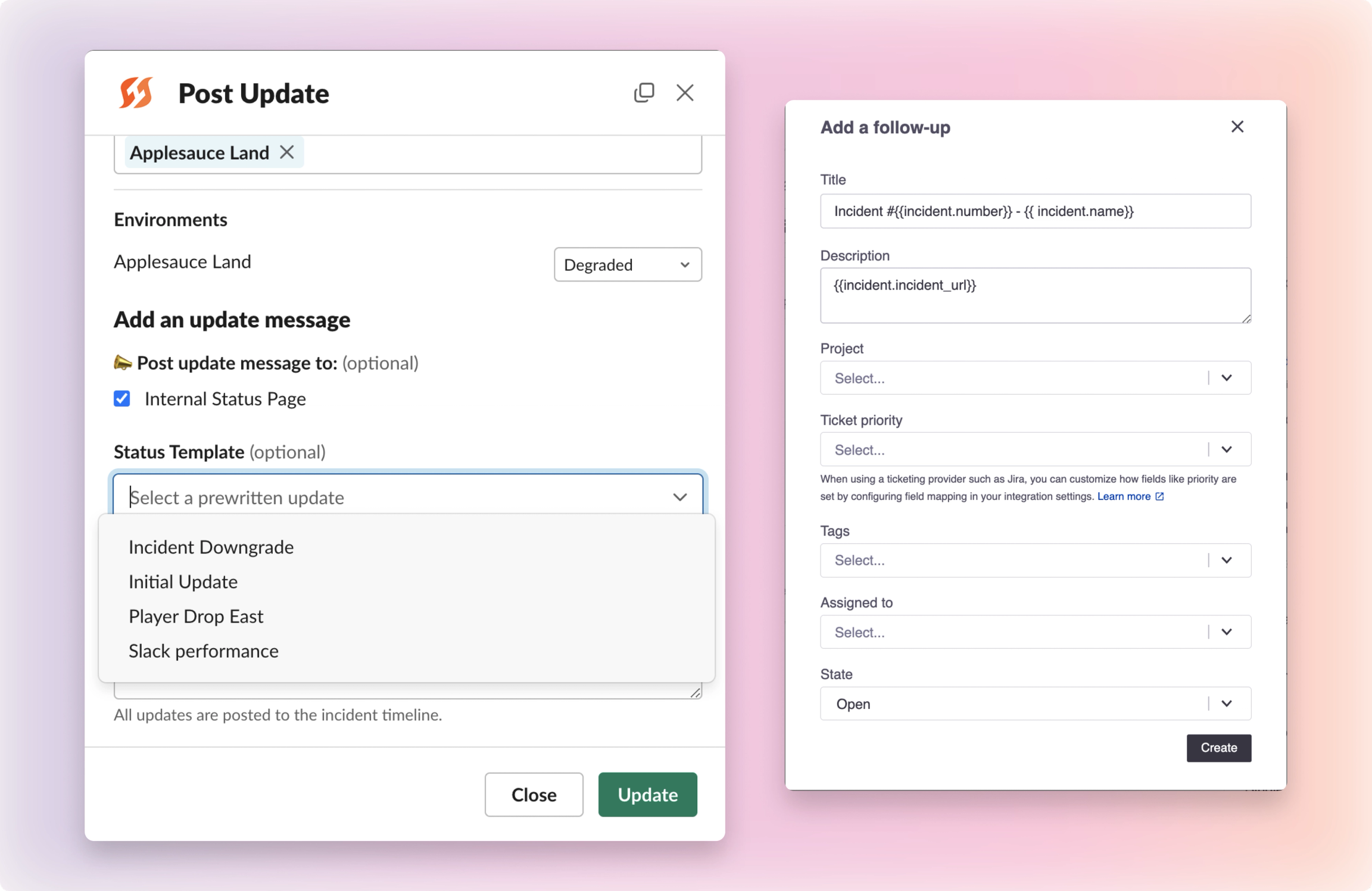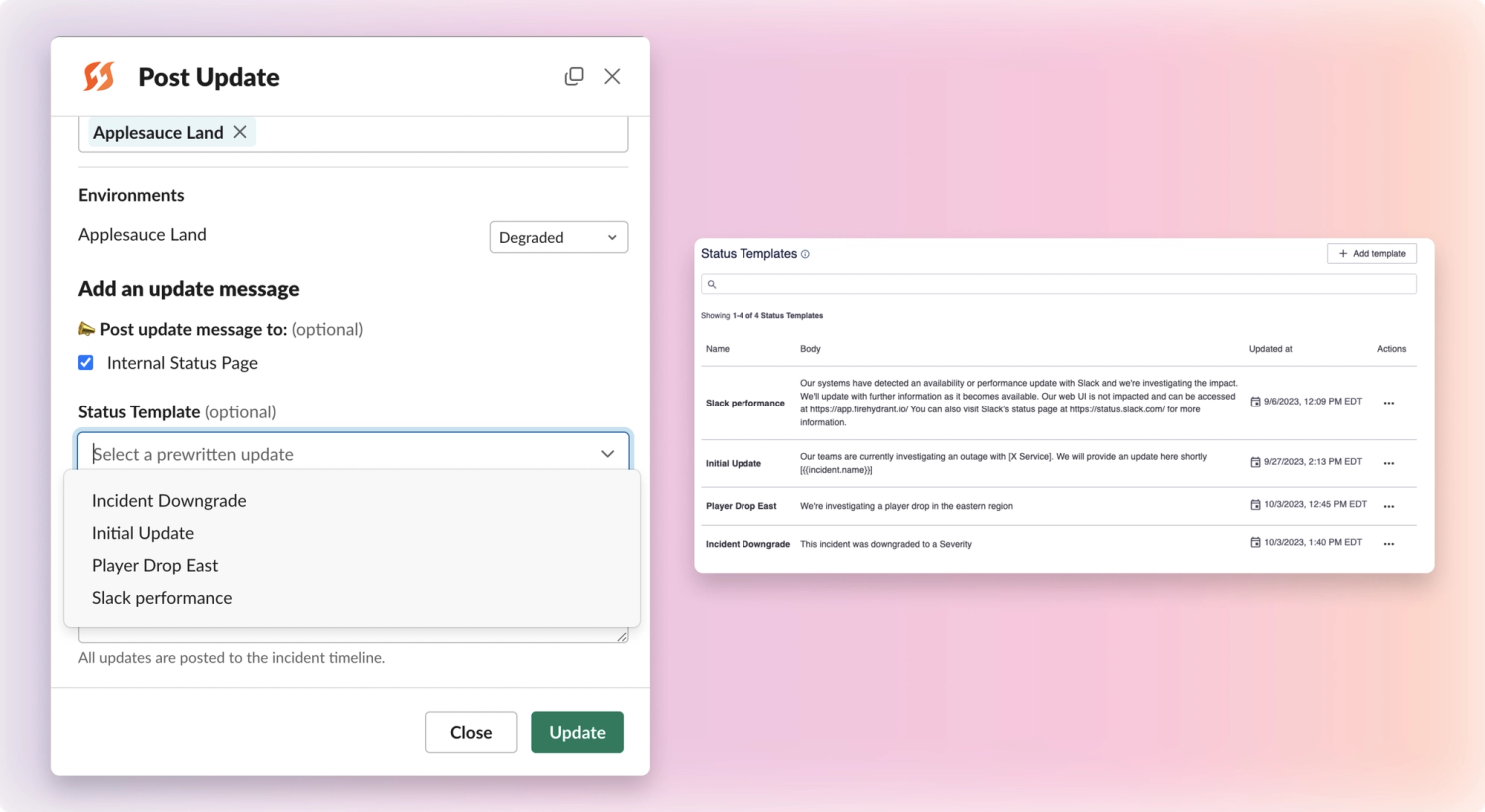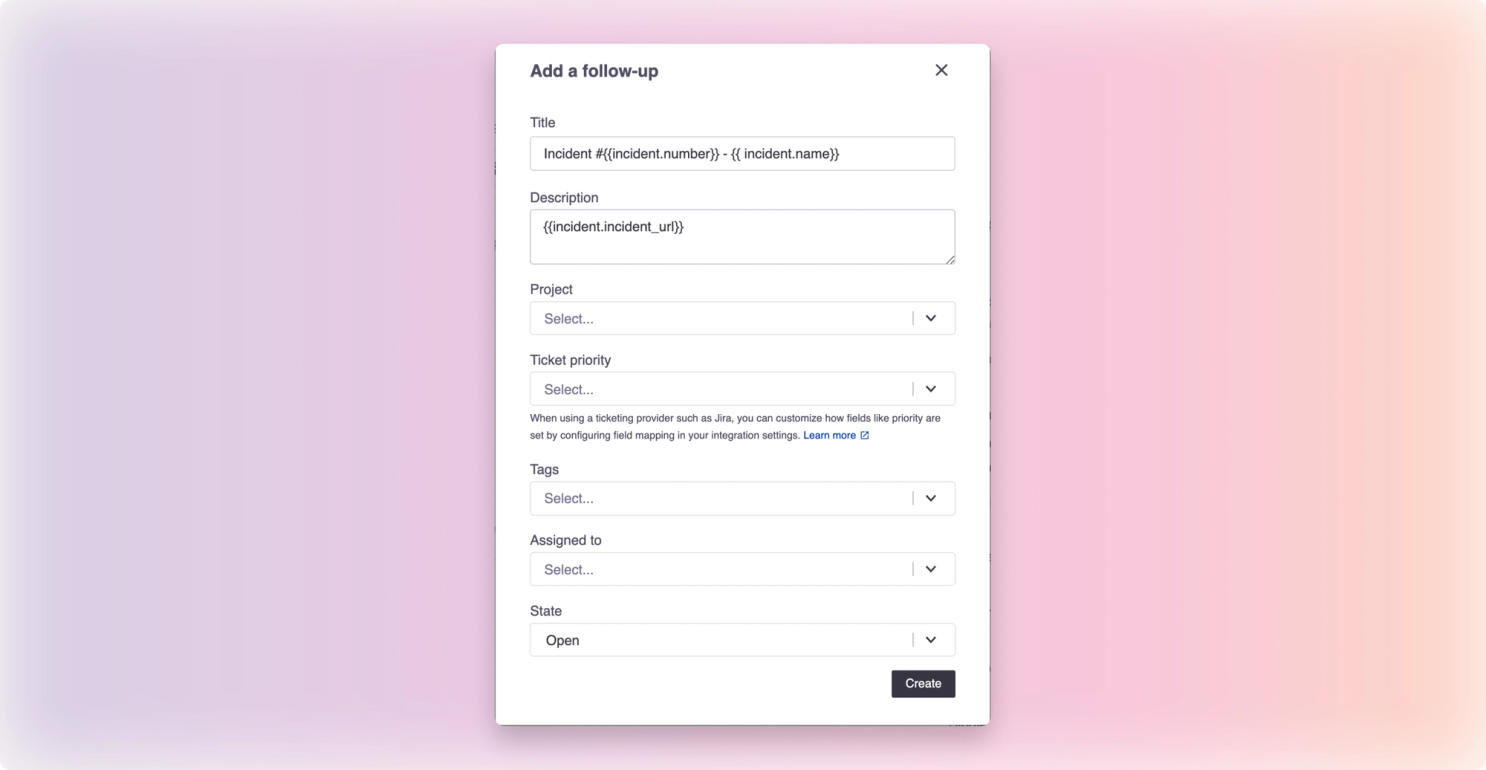
Status Update Templates#status-update-templates
Do all your status page updates look similar after a while? Have one flaky service where you know exactly what you’d tell your customers and stakeholders if someone told you there was an outage? Tell that to status pages! We’ve created status update templates that you can configure in settings. These will allow you to pre-fill out common updates to a status page, so that you have a place to start from when updating an incident from slack. Configure these today by going to Settings > Status templates, and using them the next time you run “/fh update”

Improving your Follow Up#improving-your-follow-up
Whenever a follow up is filled out, they usually could use some incident specific data in them as well. Today, we’re announcing changes that will make it easier for you to pull in incident information as you create a follow up. We’ve highlighted the liquid enabled fields and added some help text that’ll highlight where liquid templating is available and how to use it. Try this out by opening up a follow up from either Slack or the Web UI to see how it works today!

Other Changes and Bug Fixes#other-changes-and-bug-fixes
- We added the ability to toggle off Incident Types in Incident Settings
- We added guardrails stopping you from navigating away from unsaved work on a retrospective
- We added the ability to toggle Priority off in Organization Settings
- We added copy to clarify what’s about to happen when testing a runbook
- We added details about liquid context to runbook configuration for custom fields
- We fixed a bug where duplicate catalog items could be displayed on the teams page